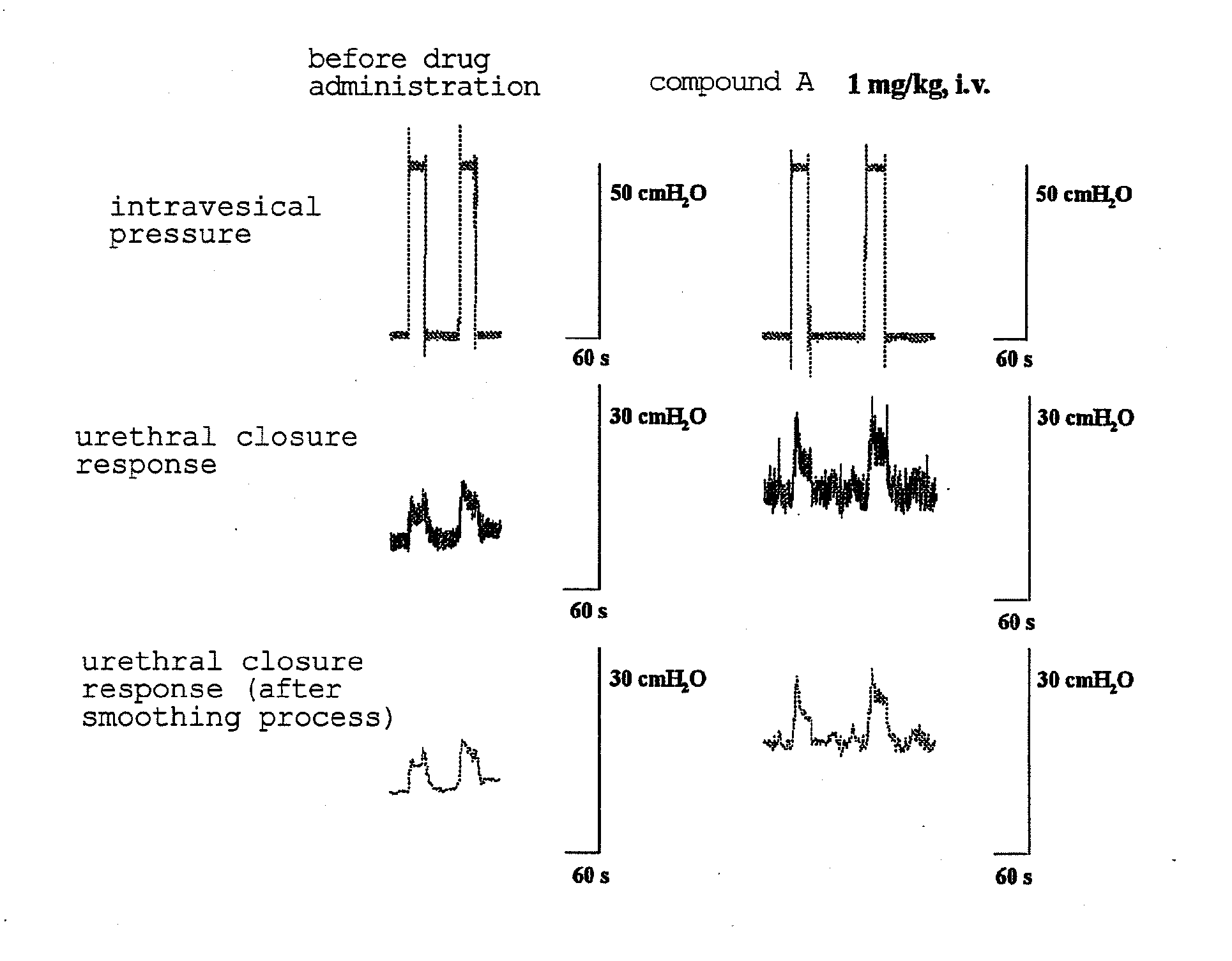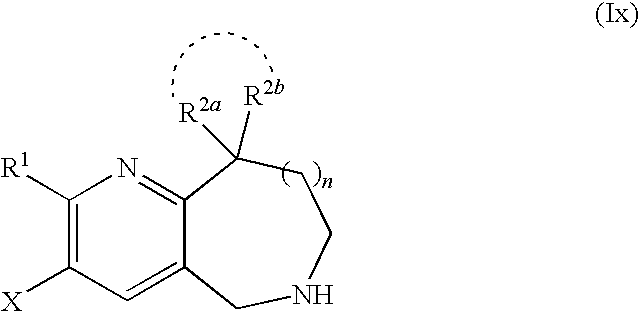Condensed pyridine derivative and use thereof
- Summary
- Abstract
- Description
- Claims
- Application Information
AI Technical Summary
Benefits of technology
Problems solved by technology
Method used
Image
Examples
example 1
9-Methyl-2-morpholin-4-yl-6,7,8,9-tetrahydro-5H-pyrido[3,2-c]azepine
(Step 1)
[0664]To a solution of 2,6-dichloronicotinic acid (50.0 g) and DMF (10 mL) in toluene (1 L) was added dropwise oxalyl dichloride (22.3 mL) under ice-cooling, and the mixture was stirred at room temperature for 1.5 hr. The reaction mixture was concentrated, and THF (200 mL) was added to the residue. To this solution was added a solution of benzylamine (30.7 g) in THF (300 mL), and 1N aqueous sodium hydroxide solution (500 mL) was added. After stirring at room temperature for 1 hr, the reaction solution was poured into water, and the mixture was extracted with ethyl acetate. The organic layer was washed with saturated brine, dried over anhydrous magnesium sulfate, and concentrated. The obtained residue was recrystallized from ethyl acetate to give N-benzyl-2,6-dichloronicotinamide (56.2 g, 77%) as a solid.
[0665]1H-NMR (CDCl3): δ4.67 (2H, d, J=5.6 Hz), 6.79 (1H, brs), 7.28-7.49 (6H, m), 8.15 (1H, d, J=8.1 Hz)
[0...
example 2
9-Methyl-2-morpholin-4-yl-6,7,8,9-tetrahydro-5H-pyrido[3,2-c]azepine hydrochloride
[0682]A mixture of the compound (0.160 g) obtained in Example 1 and 4N hydrogen chloride-ethyl acetate solution (5 mL) was stirred at room temperature for 16 hr, and concentrated. The obtained residue was recrystallized from ethanol / diisopropyl ether to give 9-methyl-2-morpholin-4-yl-6,7,8,9-tetrahydro-5H-pyrido[3,2-c]azepine hydrochloride (0.134 g, 73%) as a solid.
[0683]1H-NMR (DMSO-d6): δ1.30 (3H, d, J=7.0 Hz), 1.52-1.70 (1H, m), 1.82-1.94 (1H, m), 3.22-3.38 (3H, m), 3.43-3.50 (4H, m), 3.64-3.73 (4H, m), 4.10-4.28 (2H, m), 6.63 (1H, d, J=8.5 Hz), 7.53 (1H, d, J=8.5 Hz), 8.90 (2H, brs)
[0684]MS(ESI+): 248 (M−HCl+H)
example 3
8-Ethyl-2-morpholin-4-yl-5,6,7,8-tetrahydro-1,6-naphthyridine
(Step 1)
[0685]A mixed solution of the compound (2.00 g) obtained in Example 1, step 3, potassium carbonate (1.72 g), palladium acetate (0.139 g), and tri(2-methylphenyl)phosphine (0.417 g) in DMF (60 mL) was stirred under a nitrogen atmosphere at 100° C. for 16 hr. The reaction solution was filtered through celite, poured into water, and the mixture was extracted with ethyl acetate, dried over anhydrous magnesium sulfate, and concentrated. The obtained residue was purified by silica gel column chromatography (solvent gradient: 5→30% ethyl acetate / hexane) to give a 1:3 mixture of exo form and endo form as an oil. A mixture of the obtained mixture (0.627 g), sodium tert-butoxide (0.211 g), morpholine (0.383 g), tris(dibenzylideneacetone)dipalladium (0) (0.0807 g), XPhos (0.126 g) and toluene (5 mL) was stirred under a nitrogen atmosphere at 100° C. for 15 hr. The reaction solution was filtered through celite, and concentrate...
PUM
| Property | Measurement | Unit |
|---|---|---|
| Pressure | aaaaa | aaaaa |
Abstract
Description
Claims
Application Information
 Login to View More
Login to View More - R&D
- Intellectual Property
- Life Sciences
- Materials
- Tech Scout
- Unparalleled Data Quality
- Higher Quality Content
- 60% Fewer Hallucinations
Browse by: Latest US Patents, China's latest patents, Technical Efficacy Thesaurus, Application Domain, Technology Topic, Popular Technical Reports.
© 2025 PatSnap. All rights reserved.Legal|Privacy policy|Modern Slavery Act Transparency Statement|Sitemap|About US| Contact US: help@patsnap.com



